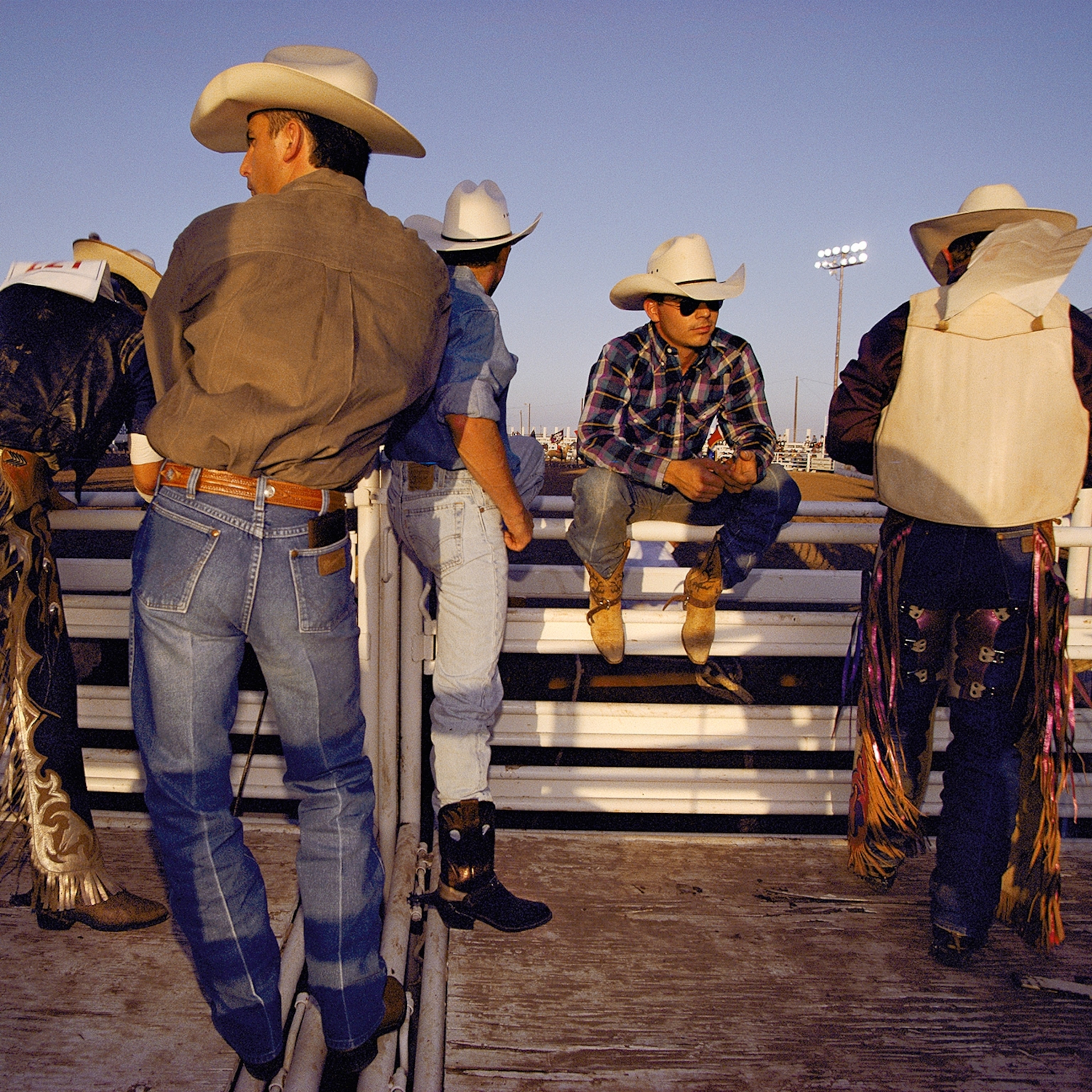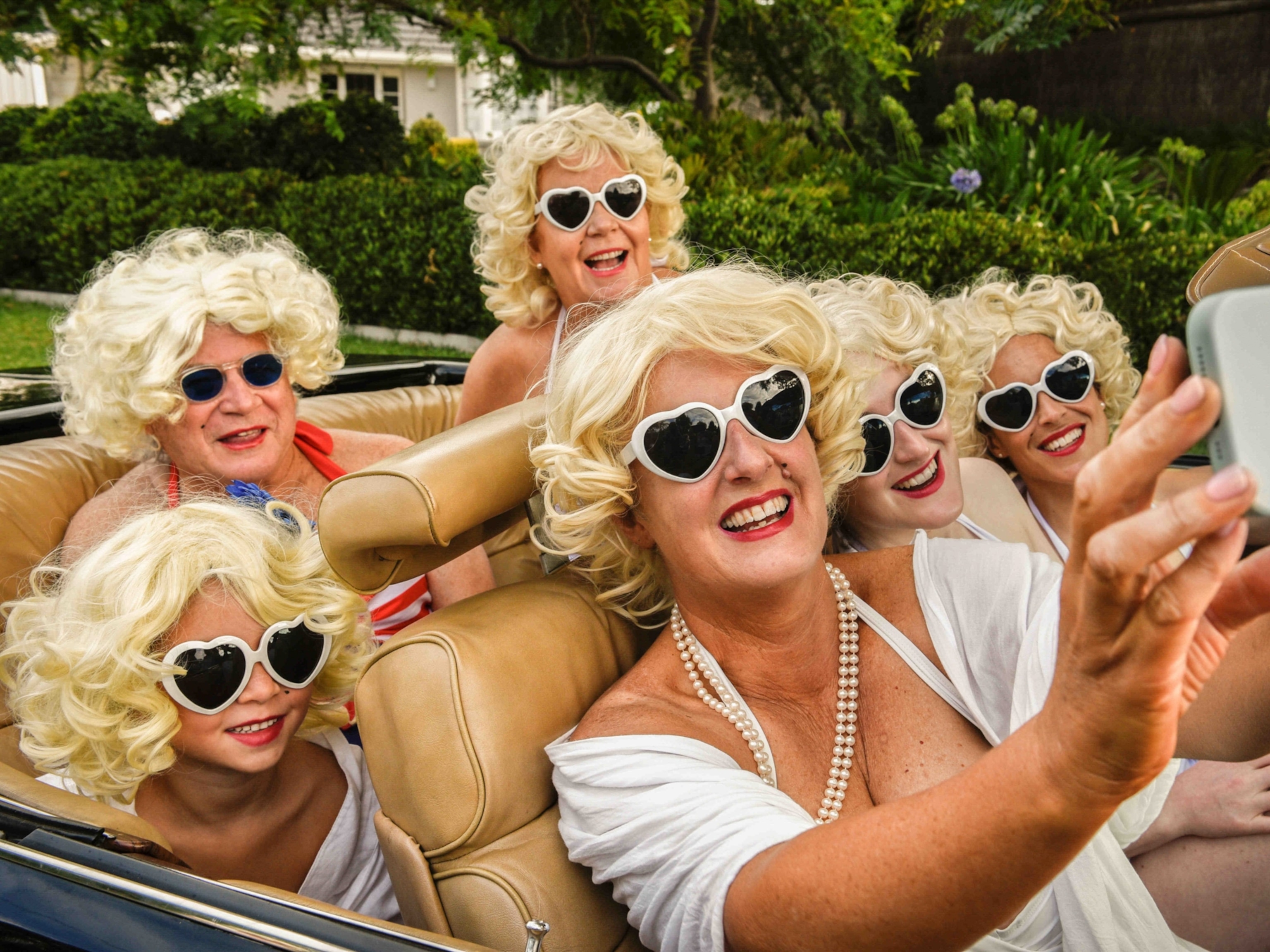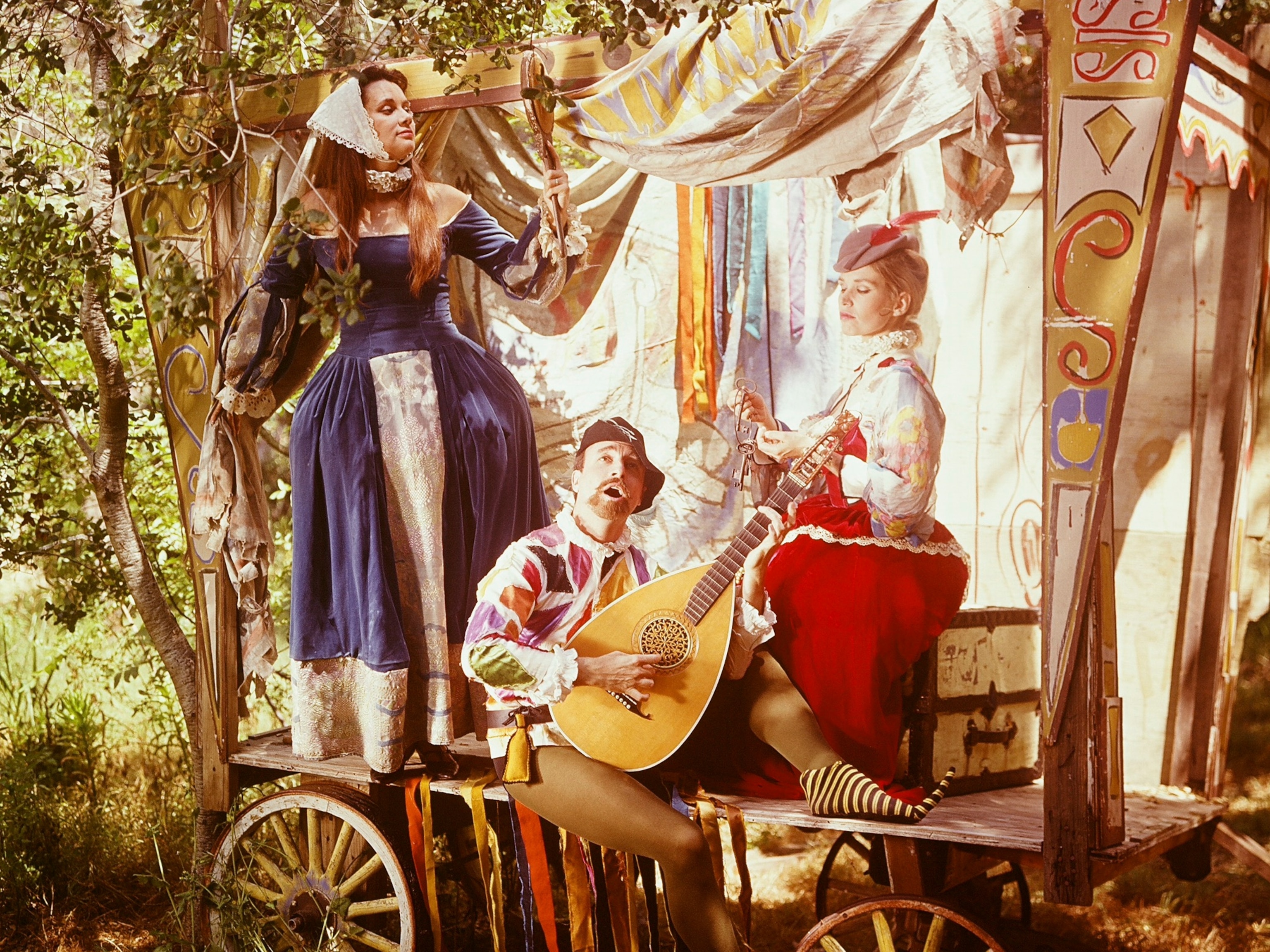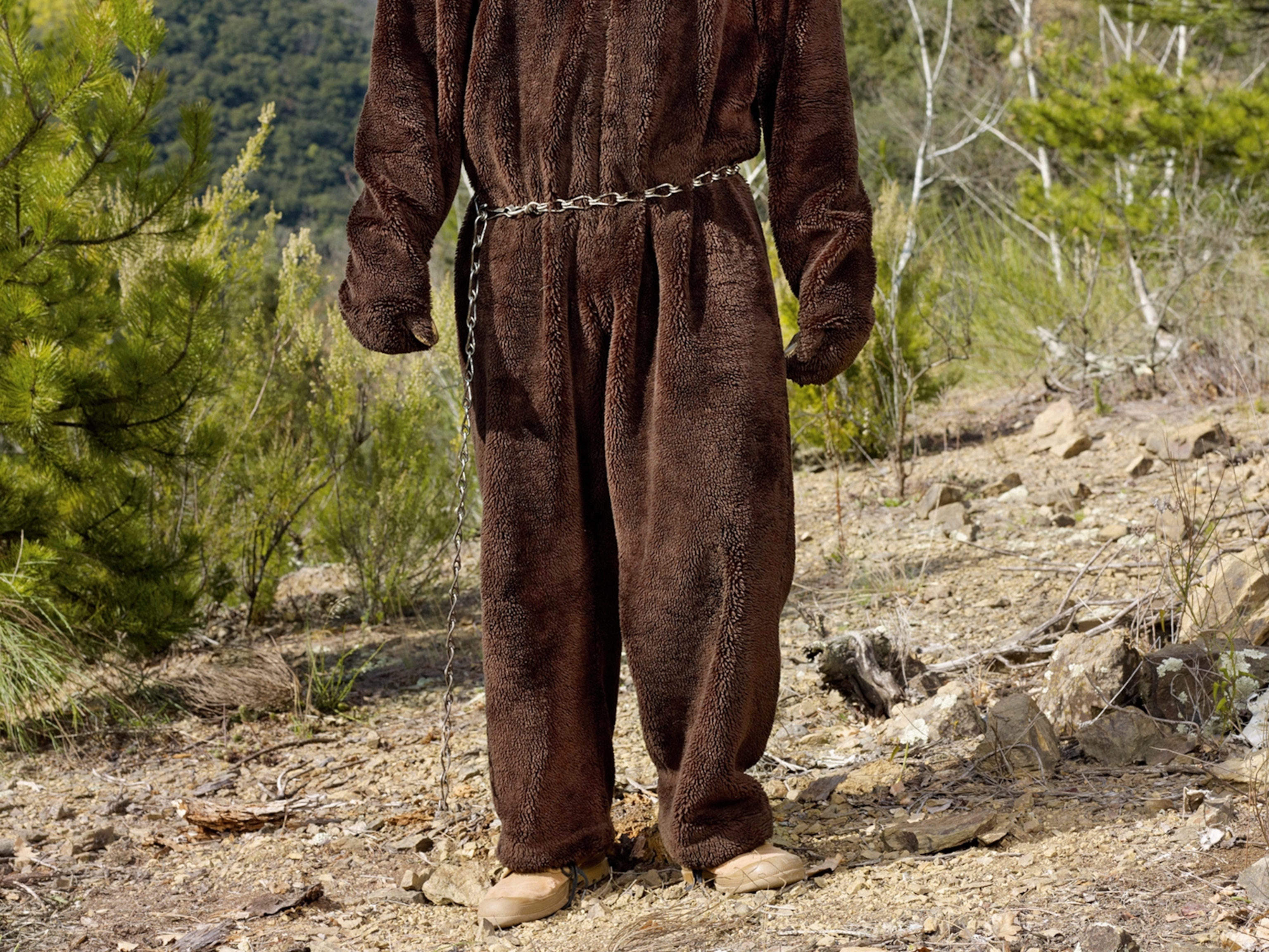
Halloween 2012: Top Costumes, History, Myths, More
Get the facts on Halloween 2012's most popular costumes, record-breaking pumpkins, and more in our Halloween roundup.
In the U.S. Northeast, Halloween 2012 may go down as the holiday that fell to "Frankenstorm," as the monstrous Hurricane Sandy's been dubbed.
But while wind and water may leave millions of trick-or-treaters high and dry, Sandy won't likely affect Halloween sales—most people have already bought their holiday goods, the U.S. National Retail Federation's Kathy Grannis told Advertising Age.
Over the centuries, Halloween's already weathered a lot of changes, and we've summed them up here for you—along with the latest facts and figures for 2012: most popular costumes, record-breaking pumpkins, and more.
BEYOND HALLOWEEN 2012: HISTORY OF HALLOWEEN
Pagan Progenitor
Halloween's origins date back more than 2,000 years. On what we consider November 1, Europe's Celtic peoples celebrated their New Year's Day, called Samhain (SAH-win).
On Samhain eve—what we know as Halloween—spirits were thought to walk the Earth as they traveled to the afterlife. Fairies, demons, and other creatures were also said to be abroad. (See pictures of crypts and catacombs.)
Celtic Costumes
In addition to sacrificing animals to the gods and gathering around bonfires, Celts often wore costumes—probably animal skins—to confuse spirits, perhaps to avoid being possessed, according to the American Folklife Center at the U.S. Library of Congress.
By wearing masks or blackening their faces, Celts are also thought to have impersonated dead ancestors.
Young men may have dressed as women and vice versa, marking a temporary breakdown of normal social divisions.
In an early form of trick-or-treating, Celts costumed as spirits are believed to have gone from house to house engaging in silly acts in exchange for food and drink—a practice inspired perhaps by an earlier custom of leaving food and drink outdoors as offerings to supernatural beings.
(Beyond Halloween 2012: more on the first Halloween costumes.)
Christian Influence on Halloween
Samhain was later transformed as Christian leaders co-opted pagan holidays. In the seventh century Pope Boniface IV decreed November 1 All Saints' Day, or All Hallows' Day.
The night before Samhain continued to be observed with bonfires, costumes, and parades, though under a new name: All Hallows' Eve—later "Halloween."
Halloween Arrives in America
European immigrants brought Halloween to the United States, and the celebration really gathered steam in the 1800s, when Irish-American immigration exploded.
Anoka, Minnesota, may be home to the United States' oldest official Halloween celebration. Beginning in 1920, the city began staging a parade and bonfire.
Anoka historians say townsfolk wanted to curb Halloween pranks that loosed cows on Main Street and upended outhouses.
HALLOWEEN 2012
Business of Halloween 2012
Before Hurricane Sandy has struck, a record-breaking 170 million people said they plan on celebrating Halloween in 2012, the highest in the National Retail Federation (NRF)'s ten years of surveying Americans about their Halloween habits.
Seven in 10 Americans, or 71.5 percent, plan to celebrate Halloween, up from 68.6 percent last year, according to NRF.
The average person will spend a bit more this year too including $79.82 on decorations, costumes, and candy, which is up from $72.31 last year. Total expenditures for the holiday should reach $8 billion, an increase from $6.86 billion last year.
"By the time Halloween rolls around each year it's safe to say Americans have already spent two months preparing for one of the fastest-growing and most widely loved holidays of the year," NRF president and CEO Matthew Shay said in a statement.
Costumes consume the biggest part of the United States' Halloween dollars ($28.65 per person), followed closely by candy and decorations.
What an Average American Will Spend on Halloween in 2012
• Halloween Costumes: $28.65
• Halloween Candy: $23.27
• Decorations: $23.56
• Greeting Cards: $4.34
When it comes to costumes, the NRF survey found that about 45 percent of Americans will be dressing up—a bump of 2 percent from 2011. This year about one-third of all costumed celebrants will find inspiration for their alter egos online, trolling for ideas on Facebook (15.2 percent) and Pinterest (7.1 percent).
As always, current events will influence the characters you meet at Halloween parties, so expect to rub elbows with many Olympic athletes and presidential imposters. "With nearly one in ten celebrants taking their costume cues from current events, we’ll see plenty of Barack Obama and Mitt Romney look-alikes out-and-about for Halloween," BIGinsight Consumer Insights Director Pam Goodfellow said in a statement.
But, as always, traditional costumes still rule the day. Six million U.S. adults plan to don witch garb and another 3.2 million will dress as vampires.
Ten Most Popular Adults' Halloween 2012 Costumes
1. Witch
2. Vampire
3. Pirate
4. Batman character
5. Zombie
6. Vixen
7. Princess
8 (tied). Ghost
8 (tied). Nurse
10. Cat
Ten Most Popular Children's Halloween 2010 Costumes
1. Princess
2. Batman
3. Spider-Man
4. Witch
5. Disney Princess
6. Action/superhero
7. Pirate
8. Vampire
9. Zombie
10. Ghost
(Get trick-or-treat ideas that support National Geographic's Big Cats Initiative.)
Halloween costumes aren't just for people—many U.S. pets get into the act as well. This year, as last, the lion's share of costumed U.S. pets will appear as either pumpkins or devils.
Hallmark Halloween
Americans give about 20 million Halloween greeting cards a year, according to Hallmark Cards' website.
"The first Halloween cards that we can detect in the U.S. were produced in 1908," Deidre Parks, a spokesperson for Hallmark, told National Geographic News in 2008.
Halloween Sugar Rush
There are some 36 million potential trick-or-treaters (children aged 5 to 13) in the United States, according to the U.S. Census Bureau.
In 2009 the average American consumed 24.3 pounds (11 kilograms) of candy, much of it during the Halloween season, according to census data.
Great Pumpkins
Far from the pumpkin's native Central America, chilly Illinois produces most of the United States' pumpkins.
Illinois produced some 520 million pounds (236 million kilograms) of pumpkins in 2011, while California, Pennsylvania, and Ohio each produced at least a hundred million pounds (45 million kilograms) according to the U.S. Department of Agriculture. Together the nation's major pumpkin-producing states grew more than a billion pounds (454 million kilograms) of pumpkins in 2011, worth about $113 million.
In October 2012, the world's heaviest pumpkin was crowned at the Topsfield Fair in Massachusetts. Ron Wallace of Greene, Rhode Island presented the judges with a 2,009-pound (911-kilogram) behemoth, though the gourd has yet to be officially sanctioned for a Guinness World Record.
About 90 percent of a pumpkin's weight is from water. While growing, a champion pumpkin can add 40 pounds (18 kilograms) a day and reach the approximate size of a Volkswagen Beetle.
(See "Giant Pumpkins 'Go Heavy' This Halloween.")
WITCHCRAFT AND WILD TALES
Do You Believe in Magic?
More than a third of Americans say they believe in ghosts, according to an AP-Ipsos poll conducted before Halloween 2007. Twenty-three percent claimed to have seen a ghost or sensed one's presence.
About one in five people believe that spells or witchcraft are real, according to the poll. (Learn more about modern witchcraft.)
Halloween Urban Legends
Some Halloween spook stories just won't die—even if there's little substance behind the scare.
For example satanic cults—far more common in fiction than in fact—have been said to sacrifice black cats on Halloween.
But experts say there is little evidence for such fears, and that the few isolated incidents involving abused black cats were the work of disturbed—often adolescent—loners.
Candy tainted by poisons, needles, or razor blades is another Halloween hobgoblin.
But sociologist Joel Best said in 2010 that dangerous-candy rumors might be manifestations of fears and anxieties about the future. In a world where so many threats—terrorism, crashing stock markets—seem uncontrollable, it may be comforting for parents to focus on preventable calamities, such as a child biting into a spiked apple, said Best, of the University of Delaware.
Best conducted a study of alleged tainted Halloween candy incidents.
"I have been unable to find a substantiated report of a child being killed or seriously injured by a contaminated treat picked up in the course of trick-or-treating," he wrote.








